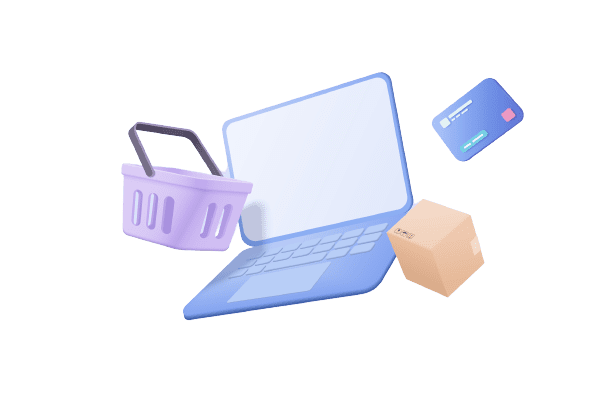What is MOQ?
What does MOQ stand for?
MOQ stands for Minimum Order Quantity. It is the smallest volume of a product/material that a supplier or manufacturer is willing to sell to a customer.
More specifically, it refers to the least number of products or units that a supplier is willing to produce at one time for one order.


Our Fulfilment Shipping Prices Start From Only £2.91
MOQ; What Is It? What Does It Stand For?
MOQ stands for Minimum Order Quantity. It is the smallest volume of a product/material that a supplier or manufacturer is willing to sell to a customer.
More specifically, it refers to the least number of products or units that a supplier is willing to produce at one time for one order.



Why do suppliers use MOQs?
Everyone needs to make sure they are not selling themselves short, so MOQs are set by suppliers to ensure they are able to cover production costs, ultimately making a profit for themselves. It can also help to reduce the overall cost per unit.
MOQs can vary from supplier to supplier, meaning that different suppliers may have different minimum order quantities. MOQs are usually defined by the number of units that have been produced, however, can sometimes be defined by the order value instead. This differs depending on who you use to produce your goods.
Our Fulfilment Shipping Prices Start From Only £2.91
Why Do Suppliers Use MOQ?
Products that are being shipped around, and handled by various people, are likely to move around in their box. In worst case scenario, the box may be dropped, squished or subjected to collision, which can cause serious damage if the products don’t have the right protection. Dunnage (such as bubble wrap) can be used to protect the products and absorb any shock from getting knocked around.


The Suppliers POV: What are the advantages of mOQs?
For suppliers, there are certain advantages and disadvantages that contribute towards their decision to have a minimum order quantity requirement when selling their products to buyers. Lets explore them the advantages first.

The Suppliers POV: What are the advantages of mOQs?
For suppliers, there are certain advantages and disadvantages that contribute towards their decision to have a minimum order quantity requirement when selling their products to buyers. Lets explore them the advantages first.

The Suppliers POV: What are the disadvantages of MOQs?
Now that we have explored the advantages of MOQs, lets explore the disadvantages.

The Suppliers POV: What are the disadvantages of MOQs?
Now that we have explored the advantages of MOQs, lets explore the disadvantages.

The Buyers POV: What are the advantages of mOQs?
Now, lets dig into the advantages of an MOQ if you’re a buyer looking to purchase products from a seller.

The Buyers POV: What are the advantages of mOQs?
Now, lets dig into the advantages of an MOQ if you’re a buyer looking to purchase products from a seller.

The Buyers POV: What are the disadvantages of MOQs?
And finally, lets explore the disadvantages of an MOQ when it comes to being a buyer.

The Buyers POV: What are the disadvantages of MOQs?
And finally, lets explore the disadvantages of an MOQ when it comes to being a buyer.

How To Calculate MOQs
How to calculate your MOQ..
Inventory holding – Calculate the cost of storing the goods in your warehouse/outsourced 3pl. This will help you understand the financial implications of ordering a large stock holding and meeting an MOQ. It can guide you what the maximum you are prepared to purchase.
Demand and Forecasting – Using previous sales data, and inventory management software can help determine how many orders you usually ship, along with seasonality and trends. Competitor analysis can also determine if your forecasting could look different to previous years and give a good indication of what you can reasonably sell, in what period. The last thing you need is to hold years of stock which isn’t moving.


How to calculate your MOQ…
Inventory holding
Calculate the cost of storing the goods in your warehouse/outsourced 3pl. This will help you understand the financial implications of ordering a large stock holding and meeting an MOQ. It can guide you what the maximum you are prepared to purchase.
Demand and Forecasting
Using previous sales data, and inventory management software can help determine how many orders you usually ship, along with seasonality and trends. Competitor analysis can also determine if your forecasting could look different to previous years and give a good indication of what you can reasonably sell, in what period. The last thing you need is to hold years of stock which isn’t moving.


How to calculate your MOQ…
Suppliers MOQ
You’ll need to determine what the supplier’s MOQs are and if they can be negotiated. They may change this depending on workload, time of the year and how much they want the business.
Break Point
Determining how many products you need to sell to simply break even will help when choosing the best MOQ.
Discounts
Suppliers generally reduce the cost of the items as they produce more goods, meaning the higher the MOQ, the lower the cost per unit. This can help determine the financial impact of increasing your order.
By ensuring that each of these points have been analysed in detail, you can hopefully create a realistic and viable MOQ that works for your business and the supplier.



Suppliers MOQ – You’ll need to determine what the supplier’s MOQs are and if they can be negotiated. They may change this depending on workload, time of the year and how much they want the business.
Break Point – Determining how many products you need to sell to simply break even will help when choosing the best MOQ.
Discounts – Suppliers generally reduce the cost of the items as they produce more goods, meaning the higher the MOQ, the lower the cost per unit. This can help determine the financial impact of increasing your order.
By ensuring that each of these points have been analysed in detail, you can hopefully create a realistic and viable MOQ that works for your business and the supplier.
What factors affect MOQs?
What factors affect MOQs?
How To Best Manage Your MOQs and How Outsourcing Your Fulfilment Can Help

Looking to outsource? Get started with TSP Fulfilment today
If you’re ready for fast, reliable fulfilment services, look no further than TSP. We are fully committed to providing the best possible service for your and your customers.

